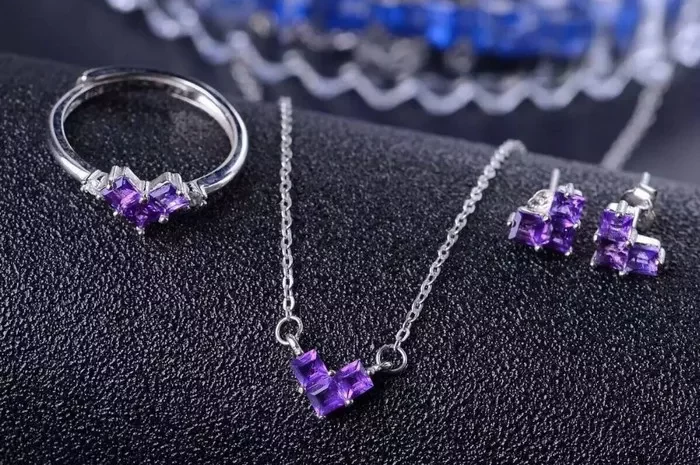Amethyst and calcite are two distinct minerals that are often considered in the realm of jewelry and crystal enthusiasts. Amethyst, a variety of quartz, is known for its purple coloration and has been highly prized throughout history. Calcite, on the other hand, is a carbonate mineral that comes in a variety of colors and has its own unique properties. When considering whether they are complementary or mutually exclusive when together, multiple factors need to be examined, including their physical properties, chemical compositions, and aesthetic interactions.
Physical Properties
Hardness
Amethyst has a hardness of 7 on the Mohs scale. This relatively high hardness makes it durable and resistant to scratching in normal wear situations. Calcite, however, has a hardness of 3 on the Mohs scale, which is much softer.
When these two are together, the difference in hardness can be a concern. If not handled carefully, the calcite can be easily scratched by the amethyst. For example, in a jewelry piece where they are in close contact, during cleaning or accidental bumps, the calcite may get damaged.
Crystal Structure
Amethyst has a trigonal crystal structure. It forms in a way that gives it a characteristic shape and internal arrangement of atoms. Calcite has a trigonal – rhombohedral crystal structure.
The different crystal structures can affect how light is refracted and reflected within the minerals. When combined, the way light interacts with them can either create an interesting visual effect or may cause some interference, depending on how they are arranged and cut.
Color and Transparency
Amethyst is typically purple, with varying degrees of saturation. It can be relatively transparent, allowing light to pass through and creating a beautiful play of color. Calcite comes in a wide range of colors, such as white, yellow, orange, etc.
When placed together, the color contrast can be either complementary or clash, depending on the specific shades. For example, a pale purple amethyst with a bright yellow calcite can create a striking visual contrast that some may find appealing, while others may consider it too bold or gaudy.
Chemical Compositions
Stability
Amethyst is a form of silicon dioxide (SiO₂), which is a relatively stable compound. Calcite is calcium carbonate (CaCO₃). Calcite is more reactive to acids compared to amethyst.
In certain environmental conditions, such as exposure to acidic substances, calcite may be more likely to deteriorate. If amethyst and calcite are used together in a piece that may be exposed to such substances, it could pose a problem for the calcite part of the piece.
Energy and Metaphysical Properties (for those who consider such aspects)
In some metaphysical beliefs, amethyst is associated with calming and spiritual properties. Calcite is often associated with energy amplification.
Some believe that when these two are together, they can either enhance each other’s properties or create a sort of imbalance, depending on how one interprets and experiences these so – called energy interactions. However, from a scientific perspective, there is no evidence to support these claims.
Aesthetic and Practical Considerations in Jewelry Design
Complementary Aesthetics
In some jewelry designs, the combination of amethyst and calcite can be very appealing. The different colors and textures can be used to create a multi – dimensional look. For example, a beaded necklace with alternating amethyst and calcite beads can create a unique pattern.
If the shapes of the gemstones are carefully chosen and cut, they can enhance each other’s beauty. A faceted amethyst paired with a smoothly polished calcite can create an interesting contrast in surface finish.
Mutually Exclusive Aspects in Design
As mentioned before, the difference in hardness can be a practical issue. If a jeweler is not careful during the setting process, the calcite may chip or get scratched.
Also, from a color – harmony perspective, if not paired correctly, the combination can look unappealing. For instance, a muddy – looking calcite with a too – bright amethyst may not create an aesthetically pleasing result.
Conclusion
In conclusion, whether amethyst and calcite are complementary or mutually exclusive when together depends on various factors. From a physical and chemical standpoint, there are challenges such as the difference in hardness and reactivity. However, from an aesthetic perspective, with careful consideration and design, they can be combined in a way that is both beautiful and unique. It is also important to note that for those who consider metaphysical aspects, the interpretation of their combination can vary greatly.
Related topic:
- Where Can One Find an Amethyst Geode?
- What Is the Best Quality Amethyst?
- What Is Angel Aura Amethyst?


